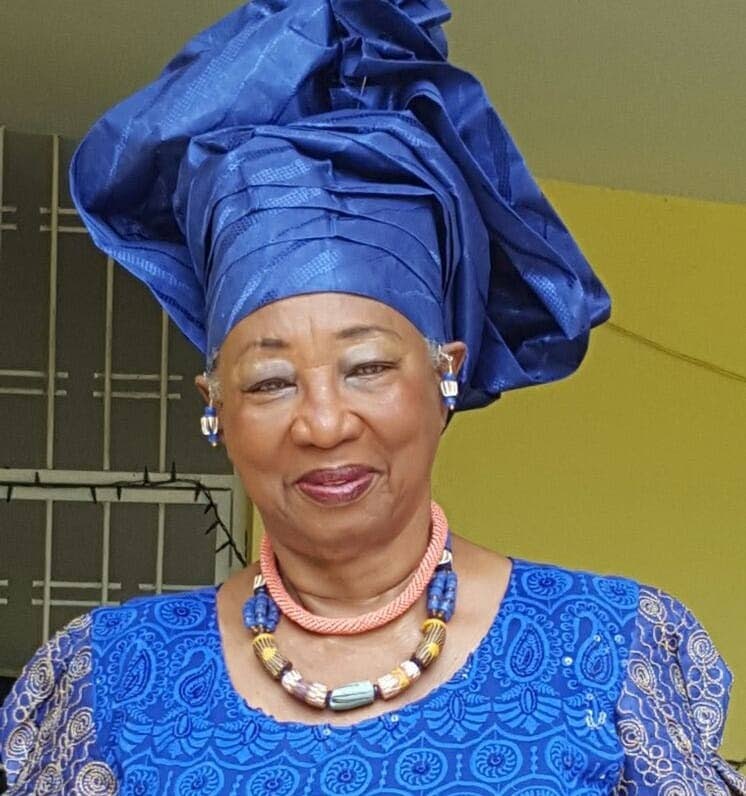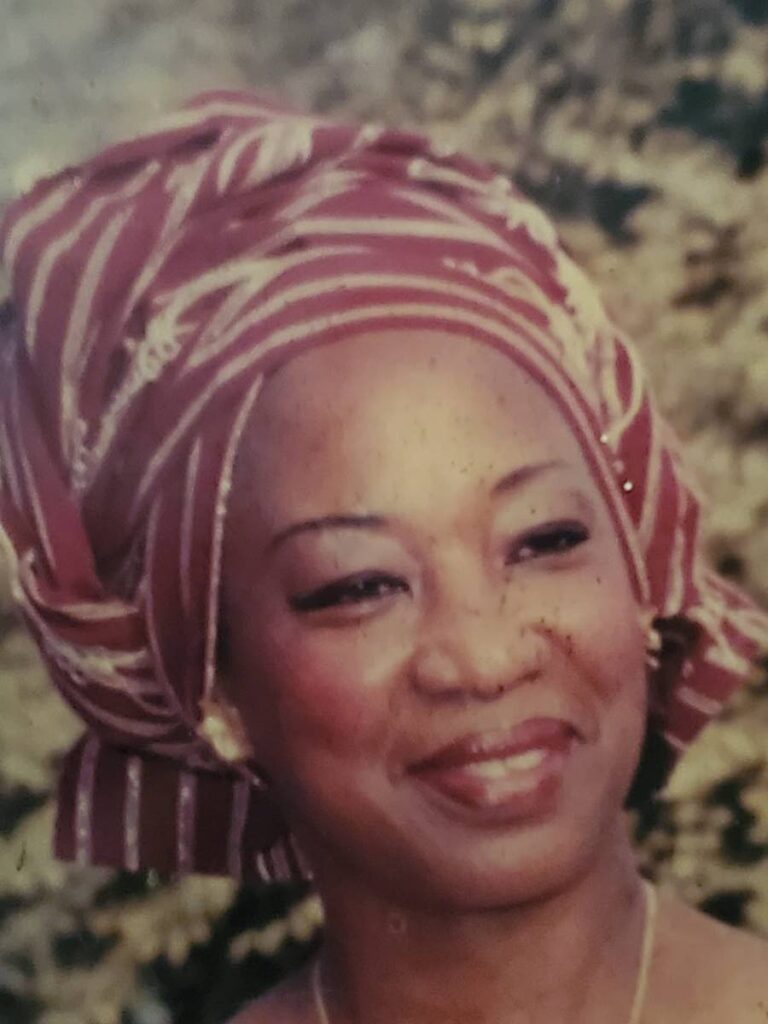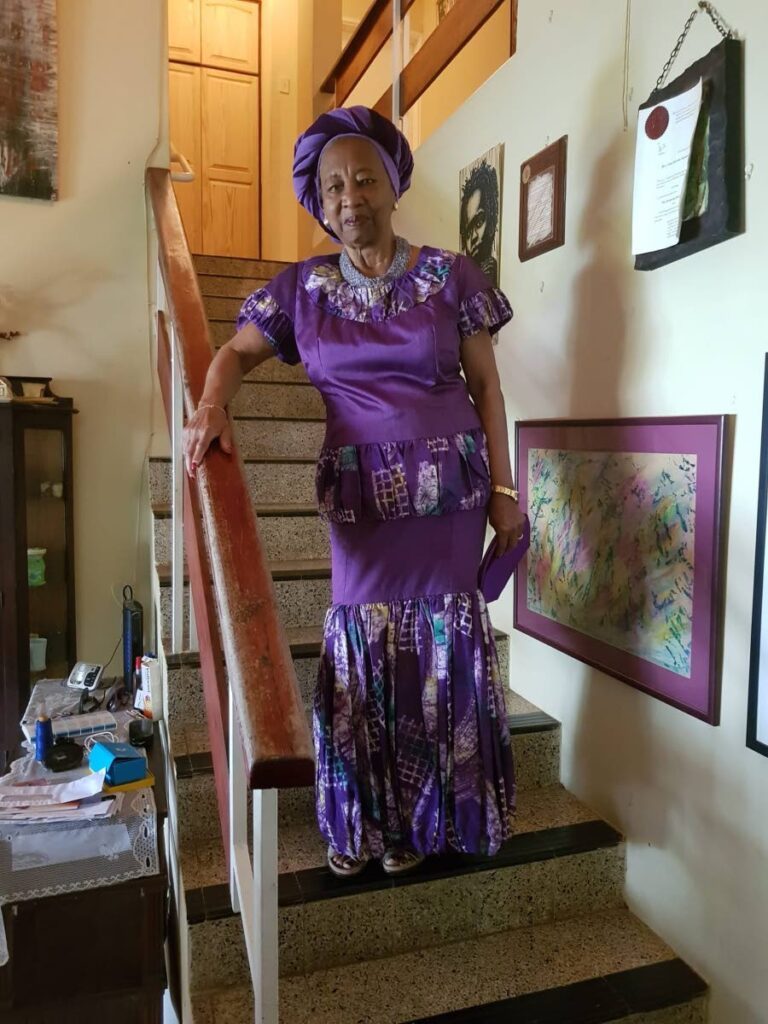The legacy of Mother Ipyana – Irma Simonette

In modern Trinidad and Tobago, it's not uncommon to see someone dressed in traditional African clothing, especially for a formal event like a wedding.
The regular wearing of that style of dress and the black consciousness it represents is part of the legacy of businesswoman and national-award recipient Irma Ipyana Simonette.
Simonette, who received the Hummingbird Medal (Silver) in 2011 for her contribution to culture, died on January 19 in Blue Range, Diego Martin, at her family home of the last 50 years. She was 90.
The Office of the President and the Emancipation Support Committee (ESC) were two institutions that published condolences after her death. The Office of the President noted she was "one of the earliest proponents of wearing traditional African clothing locally" and President Christine Kangaloo extended condolences to her family and friends. The ESC, in its tribute, said, "Her life and achievements reflected many of the qualities of character and values that we stand for and seek to instil in our community.
"These include goal-setting, risk-taking and preparedness to sacrifice to achieve positive goals, self-discipline and commitment to family, community and nation."
The ESC said Mother Ipyana (as she was fondly known) was one of Trinidad and Tobago’s most active African business people and "remained an inspiration and mentor to many a young aspiring entrepreneur."
The ESC added: "May her transition be safe and peaceful and her ancestors greet her warmly. She will continue to live in the hearts and minds of her loved ones."
She was the widow of former senator Nicholas Simonette and leaves behind five children (a sixth, Beville, is deceased), nine grandchildren and four great-grandchildren.
Newsday spoke with two of her daughters, Hélène Anne Lewis and Hazel Simonette Herndon, in a telephone interview last week about the life of their extraordinary mother.
Born in Point Fortin on March 29, 1933, Lewis said the early instilling of black pride came from her mother's father, Ignatius Wilson, from Grenada.
"He was a very strong presence in the Point Fortin community."
She said her grandfather was "blue-black" in complexion and was nicknamed "Black Prince" for his promotion of black pride. She added that he boasted of "negritude," as it was called then, and encouraged, inspired and motivated his children, especially his daughters, to display pride at all times.
"He instilled that in her. And she was able to impart the spirit to all of us. She continued all her life, and the work she did and the reach she had to inspire people to be their best selves and first and foremost to be proud of who you are and appreciate where you came from...She wasn't afraid to say that and live that in all that she did."
Vibrant and outgoing
After leaving Bishop Anstey High School, Simonette went into teaching but gave up the profession after having her sixth child. Lewis explained that public service rules back then allowed a married woman to retire if she had children. She would return to teaching five years later, at a private school.

Irma Mother Ipyana Simonette was a supporter of the Black Power Movement and would attend meetings, including at Woodford Square. -
Herndon recalled her mother was vibrant and outgoing when she and her siblings were growing up. She enjoyed the outdoors, beach limes and family picnics.
"She was always up to preparing the basket and picnic food for us to go on beautiful journeys around the country. We visited every corner of the country as a family, with the picnic basket in the trunk and six of us in the back seat."
She said her father, in his role of developing the then-new party, the People's National Movement, (he was the first general secretary), travelled the country widely and took his family with him.
"Mummy was the willing and vibrant wife and mother carrying her brood with her."
Lewis said while her mother was living in Port of Spain she noticed the black people in the city lacked the black pride of those she left behind in Point Fortin and places like Fifth Company and Sixth Company in South Trinidad, homes of people of African descent who had been freed and brought to Trinidad in the early 19th century.
Lewis said her mother recognised people of African descent in Port of Spain were "not as well disposed" to black pride.
"They were more inclined to be submissive, subjugated to social norms and what the colonial government required."
This was during the late 60s and early 70s.
"The post-independence identity of Afro-Trinidadians was just beginning to emerge, but it was not highlighting Africanness."
She said her mother committed to be a role model for Africanness.
"As with all things, she was teaching by example."
Herndon said one of the key ways her mother was an example of this was by her clothing: she started wearing traditional African clothing daily, and would be dressed "head to toe" every day and for every type of function, whether casual or formal. Her mother especially loved her gele (head wrap).
Asked if her mother met with any negative responses to her choice of clothing, Lewis said their mother would share stories of her various encounters. She added that while the children did not receive any direct backlash, there were "mutterings" about their mother and her African clothes.
"Some people thought our mother was strange. But we never listened."
Herndon said some detractors questioned what their mother was trying to prove. She recalled one person questioned why she always "tied up her head" and asked if she did not have hair.
She said there was a lot of positivity as well, and "John Public" would admire her attire as she strutted up and down Port of Spain to transact business for her travel agency, Irnics Travel Service, one of six businesses she would establish.
The African wear would become integrated into the travel agency, one of the first African-owned ones in the country. Herndon said her mother instituted African wear for all her employees, with the men wearing African shirts and the women African skirts and head ties.
"It was one key way she led in encouraging African people in Trinidad and Tobago to embrace their Africanness."
Simonette's brother, former finance minister Selby Wilson, recalled the start of the travel service in a telephone interview last week.
"She was determined, purpose-driven and results-oriented. Nothing will stop her. If she had an idea, she had an idea."
He said his sister went from the conception of Irnics Travel Service to opening in just one month: it was one of the fastest-certified travel agencies in Trinidad.
"She learned the business very quickly and employed the right people."
Wilson said she became involved in the Black Power Movement in the 1970s, and had a tremendous impact.
"She believed we needed to have greater black consciousness."
He said although her husband was the PNM general secretary, she was not deterred from being critical of the government and the party when she felt they were not doing enough to promote and sustain young black people.
Black Power Movement
Herndon said her mother was a supporter of the Black Power Movement and would attend meetings, including at Woodford Square.

In 1973, Simonette opened Cafrique, an African boutique which sold clothing and artifacts imported from Africa. The store included a stitching room where outfits would be made from African fabric. She would travel to Ghana, Nigeria and Senegal to do business.
Lewis recalled that people flocked to Cafrique during the days of the Black Power Movement and her mother helped create many African-style weddings. She was also able to impart a lot of knowledge about the clothing, including the names and how they were to be worn at different functions.
"She did have an influence on a number of people taking on and appreciating the wearing of African clothes more."
She said her mother's work in that area and how much she was admired and respected earned her the national award in 2011.
"It certainly was a proud moment for us all. Were very happy she received that honour. Sometimes we (in TT) are slow to honour and respect our high achievers. It was very nice to be able to celebrate that with her in her lifetime and not have it done posthumously. And she wore it proudly."
In 1974 Simonette opened Palaver Place, an African-themed restaurant and jazz club at the corner of Frederick Street and Gordon Street, Port of Spain. It provided a space for emerging artistes like Ella Andall, Cheryl Byron, Pearl Eintou Springer, Brother Resistance, Clive "Zanda" Alexander, Richard "Nappy" Mayers and Nadie La Fond.
Lewis recalled Palaver Place became the number-one discotheque in Port of Spain and people over 60 would remember the "very vibrant and excellent" club.
"My mother was always about lifting standards and helping infuse pride and love for ourselves and our communities."
She recalled the club had a very strict dress code and did not allow sneakers, shorts or tank tops, but encouraged classy casual and formal wear.
"So people dressed. It became a big thing, dressing up to go out to Palaver Place."
Simonette would also go on to open Itsy Bitsy, a gift shop in Long Circular Mall, St James, and at the Roundabout Plaza, Barataria, and Bev's Burger Bar, an eating spot specialising in healthy fast foods. Lewis explained her mother's desire for her children to have tertiary education was largely her motivation for getting into business: her parents would not have been able to afford that on the salary of a teacher or a politician.
But Simonette's influence extended beyond her six children. Herndon said since she died the family has received many calls from people who spoke about how she had had an impact on their lives.
She also remembered the late MP Margaret Hector, who worked for Simonette as a waitress at Palaver Place and emulated her closely, including her style of African wear. That decision would transform Hector from a waitress to a community activist to a government minister under the NAR.
"She could not have done it without my mother's influence. And there are many stories like that."
Simonette celebrated her 90th birthday last March quietly at home with her family. Lewis said at that point her mother was beginning to have health challenges and they did not want to have anything too stressful for her. She added her mother was a very avid churchgoer and had a very strong relationship with God.
Asked what their mother thought about the level of black pride in society today, Herndon said she was a very positive person and was happy to note the number of middle-class people comfortable with wearing African clothes.
"She was pleased she had influenced that trend."
Lewis added, however, that her mother lamented the effect that drugs and other negative influences were having on African people, and thought of ways to reach out and help through community activism and development.
"She was deeply concerned about young people in the environments today."
Wilson said his sister "ran a good race" and it was a race that she won.
"Irma did very well. She demonstrated a lot of courage and conviction in whatever she opted to do."
He added that she was determined, purpose-driven and focused on promoting black consciousness.
"That was her mindset and commitment and her consciousness. I'm proud of her."
Simonette's funeral will be held from 10 am on January 30 at the Church of the Nativity, Crystal Stream, Diego Martin.


Comments
"The legacy of Mother Ipyana – Irma Simonette"